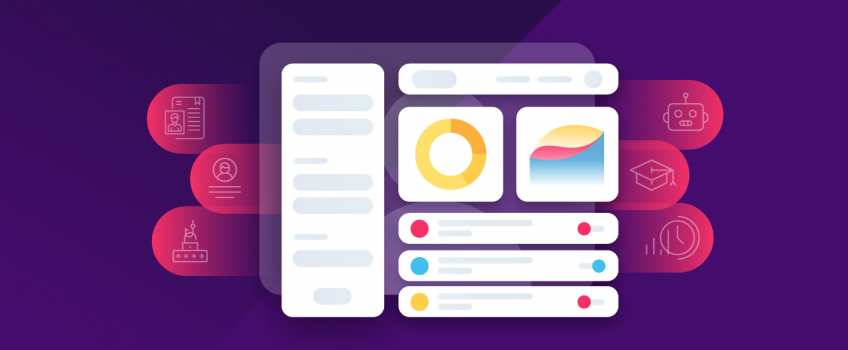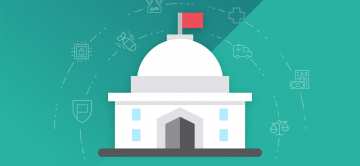Top 7 Data Science Use Cases in Administration

A successful business requires new approaches to data management in this age. Modern advances in data science area provide an efficient solutions for numerous use cases.
Data science embraces a broad spectrum of tasks in the sphere of public administration and brings new opportunities to this field. Let us take into consideration key data science use cases in administration to clear out this term based on practical examples.
Fraud detection
Considerable attention is paid to fraud detection and prevention in the sphere of public administration. When it comes to the public sector, and administration key threats are corruption, bribery, forgery, and misuse of authority. Despite all the prevention and detection measures, this issue remains topical.
Nowadays, fraudsters use sophisticated techniques to still personal data, money or to forge. Therefore, public authorities and agencies have to be inventive in this struggle. Fraud is often regarded as the main issue undermining the effectiveness of the governmental policies and procedures of the public administration offices. One of the most important measures to be taken is the real-time detection of fraud attacks. First of all, it is essential to develop an end-to-end strategy to fight fraud. This strategy should cover both internal and external processes which will become a subject for real-time data analytics. This data is crucial for data consolidation resulting in processing, detecting and preventing of fraudulent activities.
Identifying and assessing the potential risks are among the key factors influencing the success of fraud management. Real-time analytics and prediction techniques are a must for the toolkit in public administration.
Managing customer data
An essential function of all the governmental institutions is to maintain trusted information and valuable data insights in total security for people. In its turn, managing this data is a top task in the sphere of public administration.
Managing and proper using of this vast amount of data for the benefit of the whole state may be complicated and challenging. A new trend in data management is the application of blockchain technologies. Blockchain technologies enable secure access to public data for governmental agencies due to the specific approach to data storage. A blockchain comprises the data in the form of blocks, these blocks get organized into a chain, and after that none of the actors can make any change or delete some of them. Instead, these blocks may be verified or managed.
The most vivid example of the blockchain application for data management refers to the transactions of the land registry. Detailed information on selling, registering and sales transactions are automatically recorded to reduce paper documentation and reduce time spent on land registration.

Industry knowledge
People working within the field of public administration are leaders by their nature. Their daily work is aimed at making societies, public services and management advanced and efficient.
The public sector is well aware of the big data advancements and does not miss a chance to implement them for its benefit. Big data brings advanced analytics, an increase in efficiency and data-based decisions to public administration. The key trends of the public administration are in prioritizing of the Internet of Things, encouraging the private-public partnership, predictive modeling using, personalizing public services and application of behavioral science. The combination of these factors causes high demand in the professionals capable of combining the knowledge of law, governance, communication, psychology, finance, management and data science.
Reporting
Administrative reports are the documents representing general status and the progress of the operation concerning some type or dimension of work. The report aims to highlight the current state, the progress made by the time of reporting and the main milestones achieved. These reports used to present a massive pile of documents. The procedure of their compiling required a lot of time and effort, due to the amount of data and multiple sources of this data.
Modern techniques and smart data algorithms brought automation to this process and made it far more efficient and less time-consuming. Advanced smart solutions and platforms allow building reports of various complexity within several minutes. Such tools have the benefit of data collection, tracking, and analysis as well as data visualization and customization. The tradition statistical approach is no longer enough to take into account all the parameters and provide a report that can contribute to the general procedure of decision making.
Besides, modern tools allow using access control checks plugins to prevent theft or fraud.
Key task of public administration is to ensure the implementation of the governmental policies. The success of the implementation must be proved by careful reporting and reliable data, which amount is enormous on the scale of the whole country.
Real-time analytics
The public sector has successfully adopted big data and enjoys the benefits of real-time data analytics. Big data solutions and smart algorithms have become an integral part of public administration.
The sector of public administration presupposes various time-sensitive operations and transactions; thus the support of real-time intelligence is crucial. A key benefit of real-time analytics is an capability to conduct constant monitoring and gain a greater extent of control over the processes and operations. The progress or a general status of transactions or processes may be tracked according to various indicators and within different time frames.
Besides, there appears a high demand in the real-time data transmission, at the same time. Many institutions use real-time data analytics to detect improper payments.
Real-time analytics enables faster and far more efficient decision making.

Robotization
The robots are actively taking more and more responsibilities every day. They are winning more trust from people and prove to be extraordinarily efficient and thriving in the completion of routine tasks. There is an opinion or even fear that robots will replace people in many positions, and some professions will become extinct shortly.
The sphere of public administration is one of those fields where robotization finds broad perspective.
Here are several functionalities that may be successfully covered by the robots:
-
Automated line recognition
Recognition software makes robots capable of recognizing essential information in the invoices, and automatic data-entry.
-
Matching and booking
Robots can easily match the invoices to receipts, contracts, etc. Robot will handle minor discrepancies and mistakes.
-
Automated notifications
Various processes need approval or some other action for finalization. Robots handle automatic notifications and status of the operations and transactions in real-time mode.
Process automation
The sphere of public administration has always been a sector burdened with multiple procedures and paperwork. Due to rapid development of technologies people have moved from recording everything on paper. However, the tradition to keep everything documented remains the same.
Thanks to automation that technological advancements brought to our life now it is possible to perform multiple operations and keep an eye on various processes in one click. Robotic process automation reduces the workload of the staff by trusting tasks to intelligent machines. Robots or AI-powered software are widely used to mimic and complete repeatable tasks. In addition, these techniques are expected to alleviate some security concerns as well.
Automation of the administrative tasks brings a considerable relief to those managers and businessmen who need to be reactive and responsive to new challenges every minute. Here are just several examples of those tasks that may be subjects for automation.
-
Emails responding and sorting
Smart label systems easily sort emails and mark the level of importance to make the working process more efficient and productive.
-
Scheduling
Synchronization of multiple calendars and meetings provides a chance to plan working time and use it to the full.
-
Auto-payments
Smart systems are capable of managing payment procedures to reduce delays.
-
Reporting
Overviews of completed cases and reports may be easily created by smart automation software for the convenience of managers and employees.
-
Calculations.
Conclusion
Public administration is carried out following public interests. As a result of digital technologies introduction into various spheres of human activities, public interest moved forward. Public administration sphere is adjusting to the rapidly developing digital environment.
The overall trend is digital openness and automation of the process keeping a sufficient security level. Improvement of governmental policies and administration services requires the application of data science.
It is essential to remember that traditional governmental models are now replaced with digital ones under the pressure of immense development of IT technologies and Internet culture. The digitalization of public administration allows delivering services faster, securely and safely.



Comments
Add a new comment: